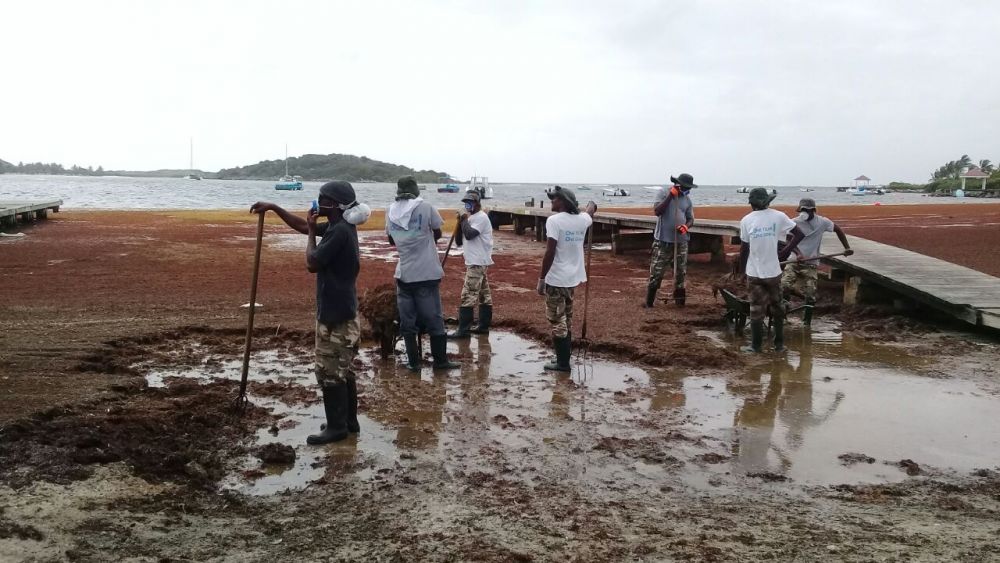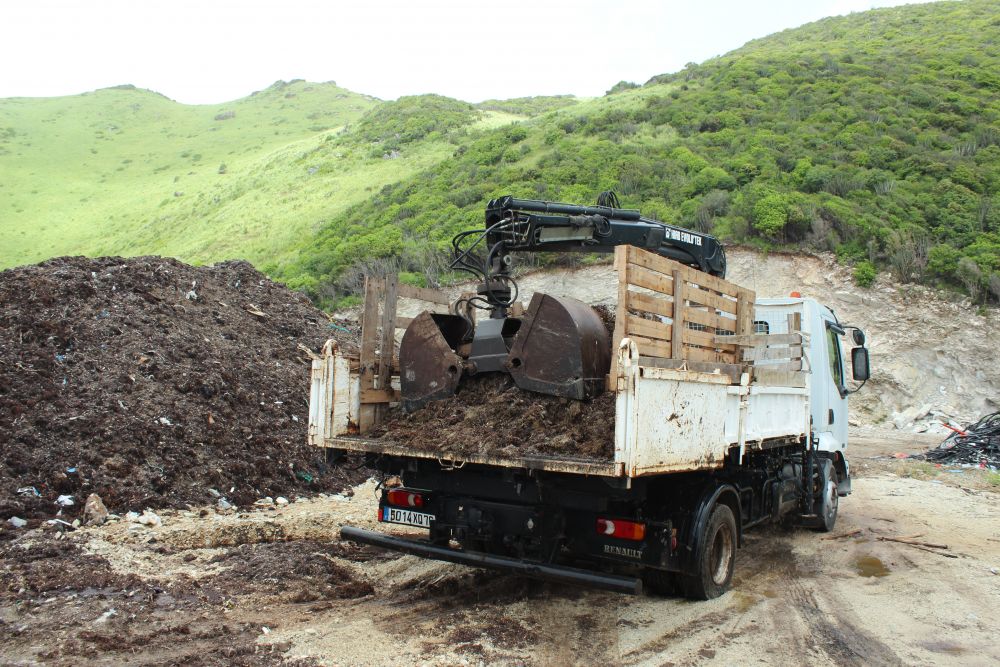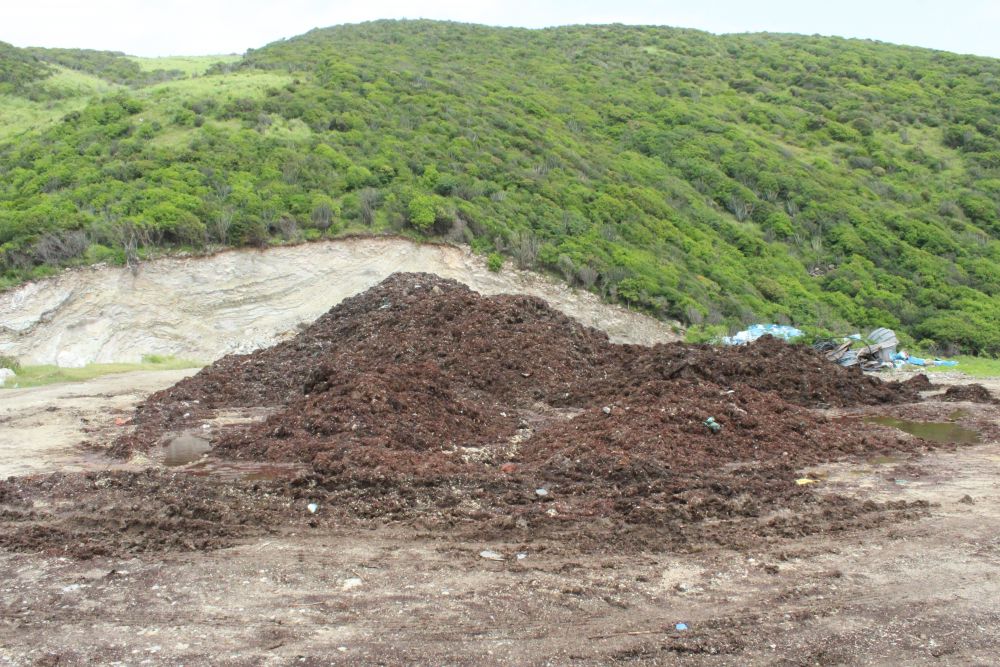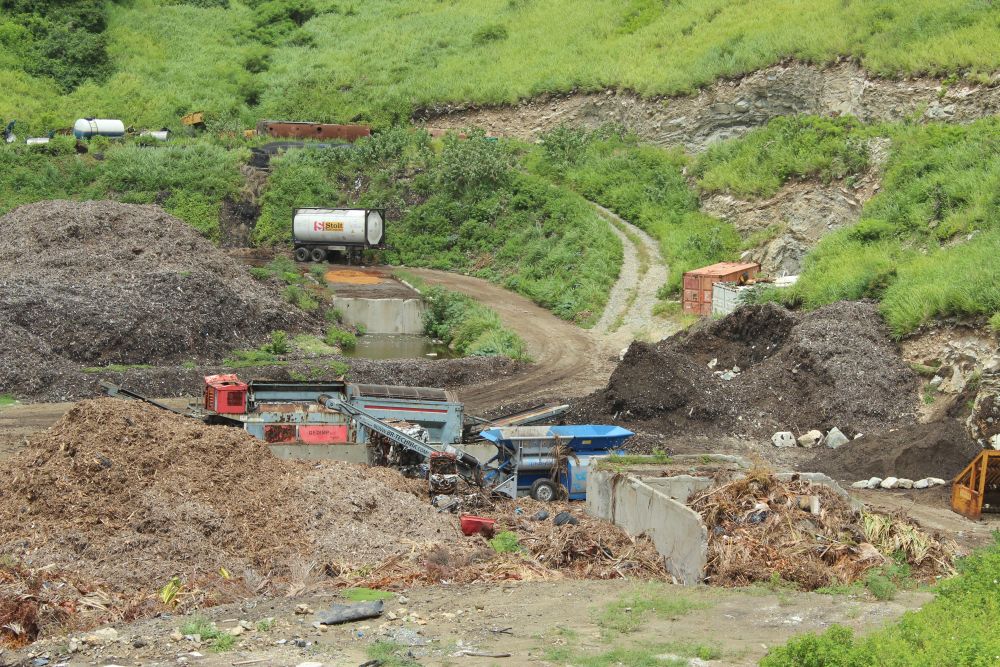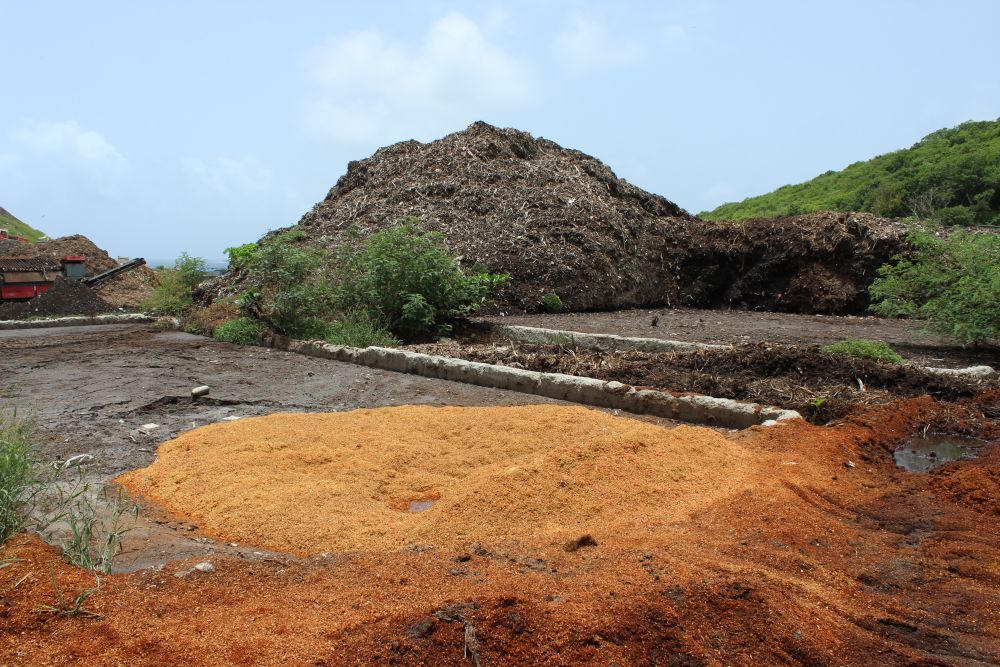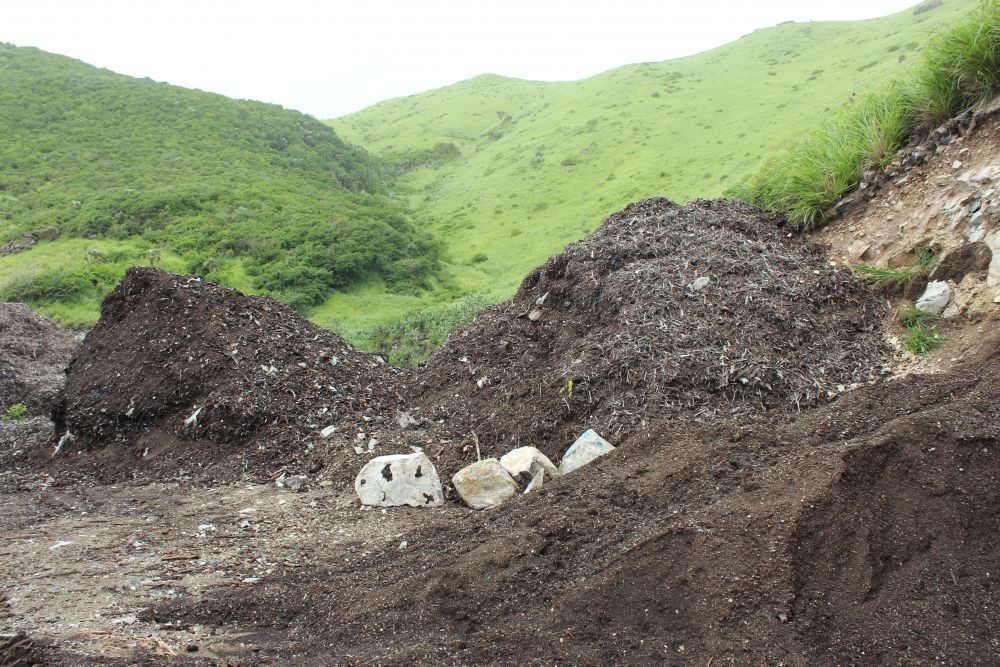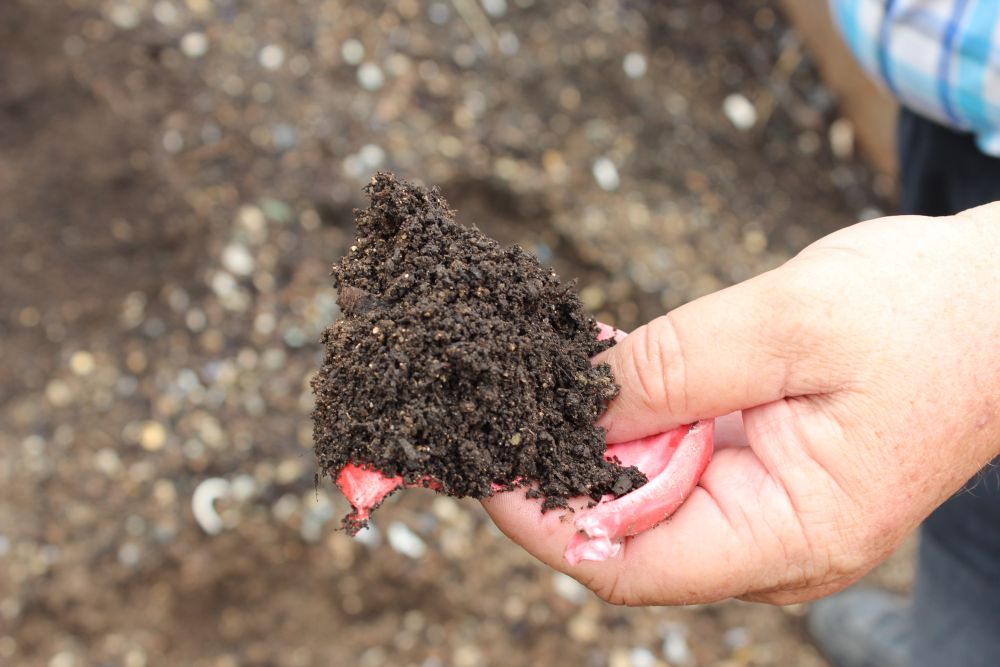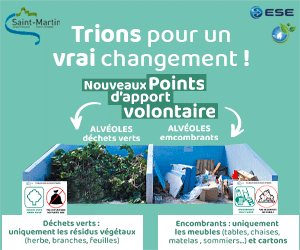What happens to the Seaweeds (Saragssum) once they are collected?
Since 2015, 20 “rangers” of the Green brigade of the Centre Symphorien d’Insertion are in charge of cleaning the beaches exposed to the Sargasso strandings, complying with safety rules and a schedule developed by Environment Dpt. of the Collectivité.
They are gathered in piles that are collected by the Collectivité with the help of a truck, which then drops them at the Eco-site. Between July 1 and 18, 2017 for example, 79 tons of brown seaweeds are driven to the Eco-site. Over the past few days, the truck driver made three deposits a day.
The seaweeds are stored outdoor at the top of the Eco-site allowing time for these to dry. This step requires that they contain as less sand as possible, that's why Verde Sxm recycles only the seaweeds collected by hand. They are added to other plant waste that is crushed and represent only 5% of the total volume of green waste. The crushed seaweeds are moistened during a few days in a pit containing waste from water treatment plants, septic tanks, and degreasers.
'Organic matter degrades plant cellulose' says Jean-Pierre Tey, the Director of Verde Sxm, the company that deals with waste management on the French side. Once the crushed seaweeds have achieved a satisfactory degree of maturation, they are screened and turned into compost. "In contrast to fertilizers, compost is an organic amendment that adds nutrients to the earth," says Jean-Pierre Tey.
The compost is sold to professionals (nurserymen, gardeners...) and to non-professional clients on the island. It can be sold as such, either under Soualigumus brand, or mixed with the earth as a ready for use under Soualigosol brand.
Photo 1: Rangers in Cul de Sac, on Tuesday, July 18 (Credits): CSI)
Photo 2: the truck of the Collectivité file leaves the seaweeds on the Eco-site
Photo 3: the seaweeds drying
Photo 4: green waste is crushed
Photo 5: crushed plants are moistened in a pit containing organic waste
Photo 6: compost is put in piles, dried and sifted
Photo 7: mixed with earth, it is now ready to us



